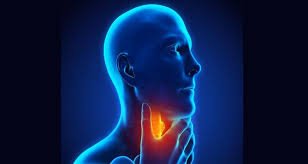A study on a rare Epiphrenic diverticulum (ED) associated with a swallowing, published in the journal Annals of the royal college of surgeons of England

72 patients successfully treated for achalasia by opting for a laparoscopic heller procedure known as cardiomyotomy
The patients suffering from a rare Epiphrenic diverticulum (ED) associated with achalasia, were treated at Zen and Joy Hospital
The patients who found it difficult to swallow underwent a laparoscopy surgery known as cardiomyotomy
The symptoms of the patients have improved and they are fine now
Mumbai: Epiphrenic diverticulum (ED) is an uncommon disease that is invariably associated with an underlying esophageal motility disorder such as achalasia. It is a disorder of the esophagus in which the nerve cells and muscles fail to work properly. It can lead to difficulties with swallowing, chest pain, coughing and breathing problems, if food gets into the lungs. A team led by Dr Roy Patankar, Director of Zen Multispecialty, successfully treated 72 patients with achalasia, and 5 patients with diverticulum (an out pouching or sac arising from the wall of the esophagus that can contain one or more layers of the wall). The study carried out for the period of 10 years, was published in the journal Annals of the royal college of surgeons of England, in 2019.
Esophageal epiphrenic diverticulum (ED) is usually secondary to a primary esophageal motility disorder, such as achalasia which is an esophageal motility disorder. Argest series of epiphrenic diverticula are small with up to 3 to 4 patients. Speaking about achalasia, it can affect any part of the digestive tract, including the intestines. In esophageal achalasia, the esophagus does not open to let food pass through, because there is a weakness in the smooth muscle of lower part of the esophagus, and the lower esophageal sphincter. Dr Patankar, Dr Vishakha Karekar, and Dr Abhay Upasane, who are the consultants attached to Zen Multispecialty, we able to give patients with achalasia, a new lease of life.
Dr Roy Patankar, Director of Zen Multi-specialty, said, “Achalasia is rare, and the cause of it is not known. One can suffer from it any age and may find it difficult to swallow food which is known as dysphagia. One may experience symptoms like food may get stuck in the food pipe, vomiting, weight loss and cough. And if it is not addressed on time, then it can block one’s food pipe, affect the lungs and one may suffer from pneumonia or food pipe cancer. Previously, achalasia was treated with the help of endoscopic balloon dilation, but would recur within 6 months or a year.”
“In a study carried out by us, since last 10 years, 72 patients with achalasia were successfully treated, by opting for a laparoscopic heller procedure known as cardiomyotomy. It is safe, highly effective, and a minimally invasive treatment for achalasia. The procedure is done under general anesthesia, wherein the muscle of the food pipe is cut to make it wider and then the muscle is stitched again so that it doesn’t close again, and the sensation that is getting blocked in the food pipe goes away. The advantages of this procedure are that it is one time cure, and a lasting procedure. After the procedure was performed, the patients were followed up for 2 years and there was a significant improvement in their symptoms. Hence, if you notice symptoms like food getting blocked in the food pipe, or pain while swallowing then you must get it investigated at any age,” concluded Dr Patankar.
Source of the study: https://www.ncbi.nlm.nih.gov/pubmed/30773891















































